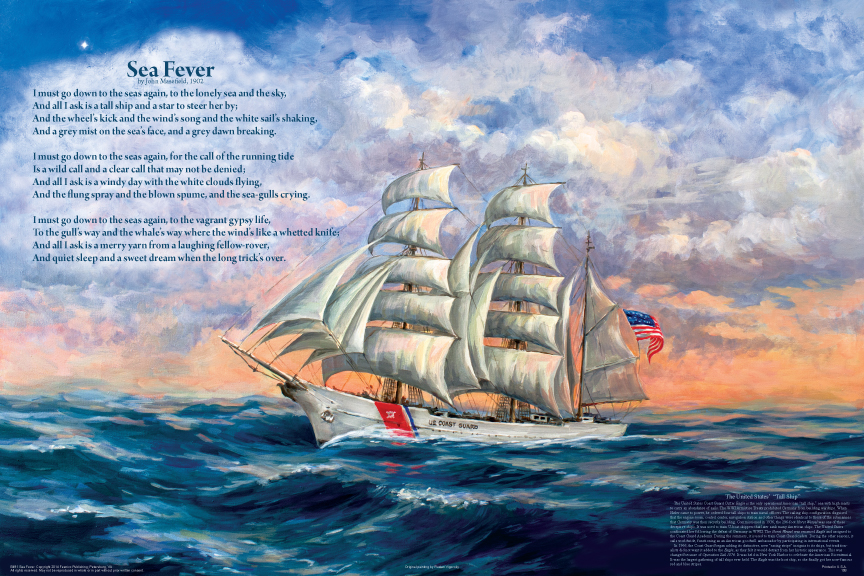|
|
|
Sea Fever |
|
 |
B491 Sea Fever (Poem)
“I must go down to the seas again, to the lonely sea
and the sky, and all I ask is a tall ship and a star to
steer her by.” This is the opening line of John Masefield’s
famous poem, Sea Fever. A “tall ship” is one
characterized by high masts and great spreads of sail.
Sea Fever was first published in 1902 and has since
been loved by generations of sailors.
The full text of the poem is superimposed over an
original oil painting of the United States Coast Guard
cutter Eagle. The 295-foot barque is the only actively
commissioned “tall ship” in American military service.
The U.S. Coast Guard Academy uses her to train
future officers during the summer months. The rest of
the year, Eagle sails to many foreign ports as our nation’s
good will ambassador. She was the only Coast
Guard ship not to have racing stripes, as the traditionalists
maintained that the stripes would be inconsistent
with her historic design. However, she was the host
ship of Operation Sail 1976, a coming together of tall
ships from all over the world in New York Harbor to
celebrate the American Bicentennial. Eagle finally got
her distinctive racing stripes.
|
History Of The Eagle
The WWI Armistice Treaty prohibited Germany from building
warships. When Hitler came to power, he ordered four tall ships
to train naval officers. The sailing ship configuration disguised
that the engine room, control center, navigation station, and other
things were identical to those of the submarines that Germany was
then secretly building. Commissioned in 1936, the Horst Wessel
was one of these four deceptive ships. She was used to train U-boat
skippers that later sank many American ships. The United States
confiscated her following the defeat of Germany in WWII. The
Horst Wessel was renamed Eagle and assigned to the Coast Guard
Academy. Her three sister ships are still in service. This story appears
in the lower right hand corner of the poster.
|
|
|
|
|